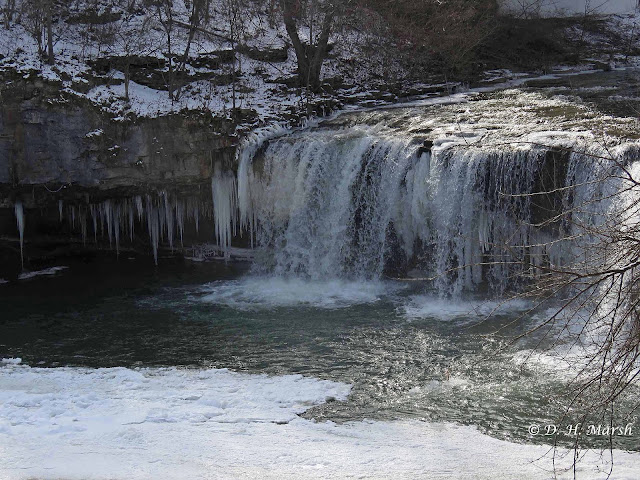Why gather in vernal pools? These shallow water bodies dry up rapidly in summer and do not seem to be hospitable places to lay eggs that need to undergo complex metamorphosis in order to become adults. They have one big thing going for them though--no fish! Fish would relish eating the frog and salamander larvae in the vernal pools. The amphibians deposit vast quantities of eggs in the pools, and while some may be lost if the pool dries too quickly, overall reproduction is more successful than it would be if there were fish to contend with.
We've had several early spring adventures in central Ohio that featured vocal frogs that were out and about calling for mates. One of most common (and largest) is the wood frog:
Here is a brief video that illustrates the barking sound of this amphibian:
At another vernal pool a cacophony of chorus frogs greeted us, sounding like someone is scraping a fingernail across a comb:
We were lucky enough to get a view of a chorus frog:
We recently heard some chorus frogs calling from a large puddle near a parking area in Scioto County. I walked over to the puddle and was partially hidden from view by some construction debris so this little frog kept right on singing:
Here he is, belting out his message:
After mating, western chorus frogs will be hidden in the mud and leaf litter most of the year. We were quite fortunate to see them!
A spring peeper is tiny, only about 2 inches in length, but makes a huge sound. This photo illustrates the typical "X" mark on its back:
Although they are quiet, many salamanders also gather in large numbers in early spring in the moist forest and in the vernal pools. Here are a few that we were fortunate enough to spot this year, hiding under logs in the wet woods.
Here he is, belting out his message:
After mating, western chorus frogs will be hidden in the mud and leaf litter most of the year. We were quite fortunate to see them!
A spring peeper is tiny, only about 2 inches in length, but makes a huge sound. This photo illustrates the typical "X" mark on its back:
Although they are quiet, many salamanders also gather in large numbers in early spring in the moist forest and in the vernal pools. Here are a few that we were fortunate enough to spot this year, hiding under logs in the wet woods.
The redback salamander is one of our most common, and it often hides under fallen logs anywhere in the moist forest:
The redback is one of the few salamanders that lives entirely on land and generally does not go into the water, even to breed.
Although they can be found in a variety of habitats, we don't see many smallmouth salamanders, but enjoyed seeing this one:
The spotted salamander is always fun to find. They are fairly common but seldom seen except in early spring:
Despite the fact that most people are totally unaware of them, all of the animals featured in this post are locally present in large numbers in our forests and are important components of healthy ecosystems. Unfortunately, their numbers are declining in many parts of their ranges due to habitat loss and other factors. Their fascinating life cycles and utilization of the vernal pool habitat makes them well worth our attention. These critters made our March and early April much more fun and interesting than I anticipated!

























































